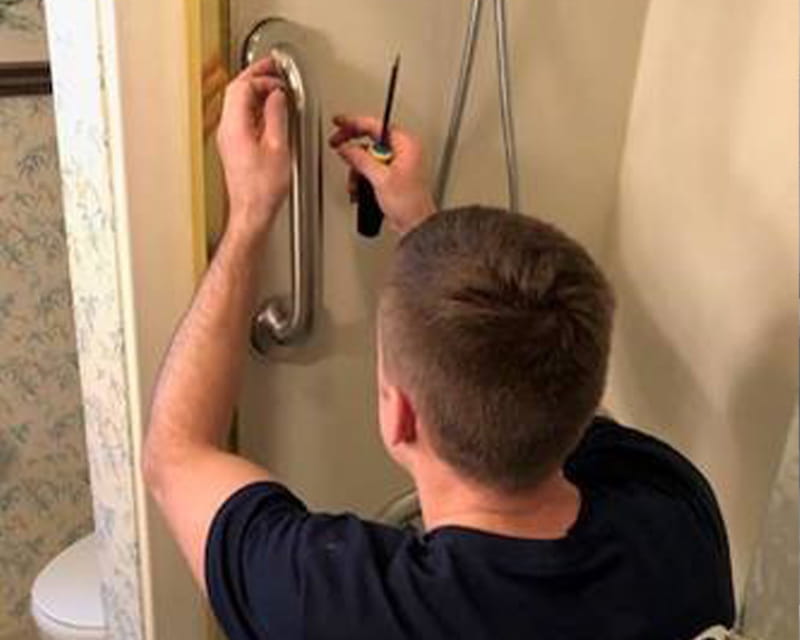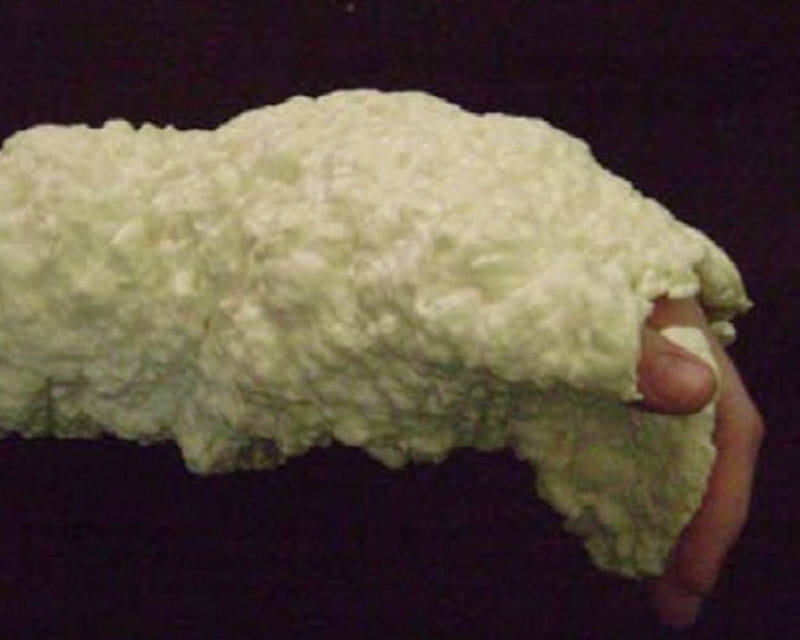
improving patient care
 An Ohio State University Wexner Medical Center orthopedic surgeon invents easy-to-use splint for military, civilian fracture care
An Ohio State University Wexner Medical Center orthopedic surgeon invents easy-to-use splint for military, civilian fracture care
A new use for spray foam invented by an orthopedic surgeon at The Ohio State University Wexner Medical Center vastly improves fracture care in austere environments like war zones.
Retired Army combat medic Kevin Martin, DO, believes his spray-foam splint could eventually replace traditional aluminum splints in many civilian, military and professional settings — from a college football field to a Boy Scout hiking trip.
“I would love to see this transform how we do first aid,” Martin says.
He envisions spray-foam splints available in every color becoming part of the regular gear list for outdoor enthusiasts and sports trainers.
But first, a commercial partner and additional tests are needed for this ingenious polyurethane foam medical advancement, known as FastCast.
Applying a traditional splint means lifting the arm or leg and manipulating it as the splint is shaped and wrapped around the fractured area or joint.
The spray-foam splint doesn’t require any major movements of the extremity. You simply straighten the arm or leg, spray the foam around the injured area and wait 50 seconds for it to harden into Styrofoam, Martin says.
Early research shows the spray-foam splint provides better fracture stability than a traditional splint and is easier to apply.
The spray-on foam splint carries other benefits, including:
Martin was an Army orthopedic resident at Fort Bliss, Texas, when his wife Emily gave him the idea for the spray-foam splint. The couple had an older house at the time, and Martin was fixing everything with cans of spray foam from Lowe’s.
“I was describing to her how we fix fractures, and she said, ‘Why don’t you use spray foam to fix them?’ That was an a-ha moment for me,” Martin says. (He cautions anyone from using store-bought spray foam on their own, however, to create a splint.)
As a combat medic, Martin was driven to find ways to improve battlefield medicine in austere, primitive environments where it’s critical to quickly immobilize fractures.
The spray foam hit all the right targets: It hard-cures, it forms to whatever it sticks to, there are no pressure points and there’s no need to manipulate the body. You can even take an X-ray through the hardened foam.
Removal is simple: The FastCast breaks and cracks just like Styrofoam. While it doesn’t appear to stick to skin, it does remove arm or leg hair.
Martin’s work was awarded the Army invention of the year. He worked with the U.S. Army Medical Materiel Command to secure two U.S. patents and improve the spray-foam splinting technique.
The first patent covers the use of spray foam for combat extremity splinting. The second relates to spray foam for spine immobilization.
Martin now continues his research at Ohio State. He presented internationally at the Imperial College of London's 2021 Blast Injury Conference and nationally at the U.S. Military Health System Research Symposium.
Improving military and civilian patient care
While the Army markets FastCast for a commercial partner, Martin continues to study additional ways the foam splint can improve medical care.
He’s planning a study at Ohio State to test whether the spray-on splint is strong enough to support a person walking on the FastCast. This latest research will call upon his experience as a paratrooper.
“When someone breaks an ankle or leg in the field, it takes four people to carry them off,” Martin says. “We want to see if you can walk off on your own after an injury with a spray foam splint.”
Other studies to further test the new splint include:
Until then, Martin pursues plans to make spray-foam splints readily available on the combat field while finding ways to extend their use into civilian life.
“That’s my goal and passion,” Martin says. “I want my wife to be able to pull out a spray can when my kid breaks an arm in the woods, spray it on and then safely take him out.”